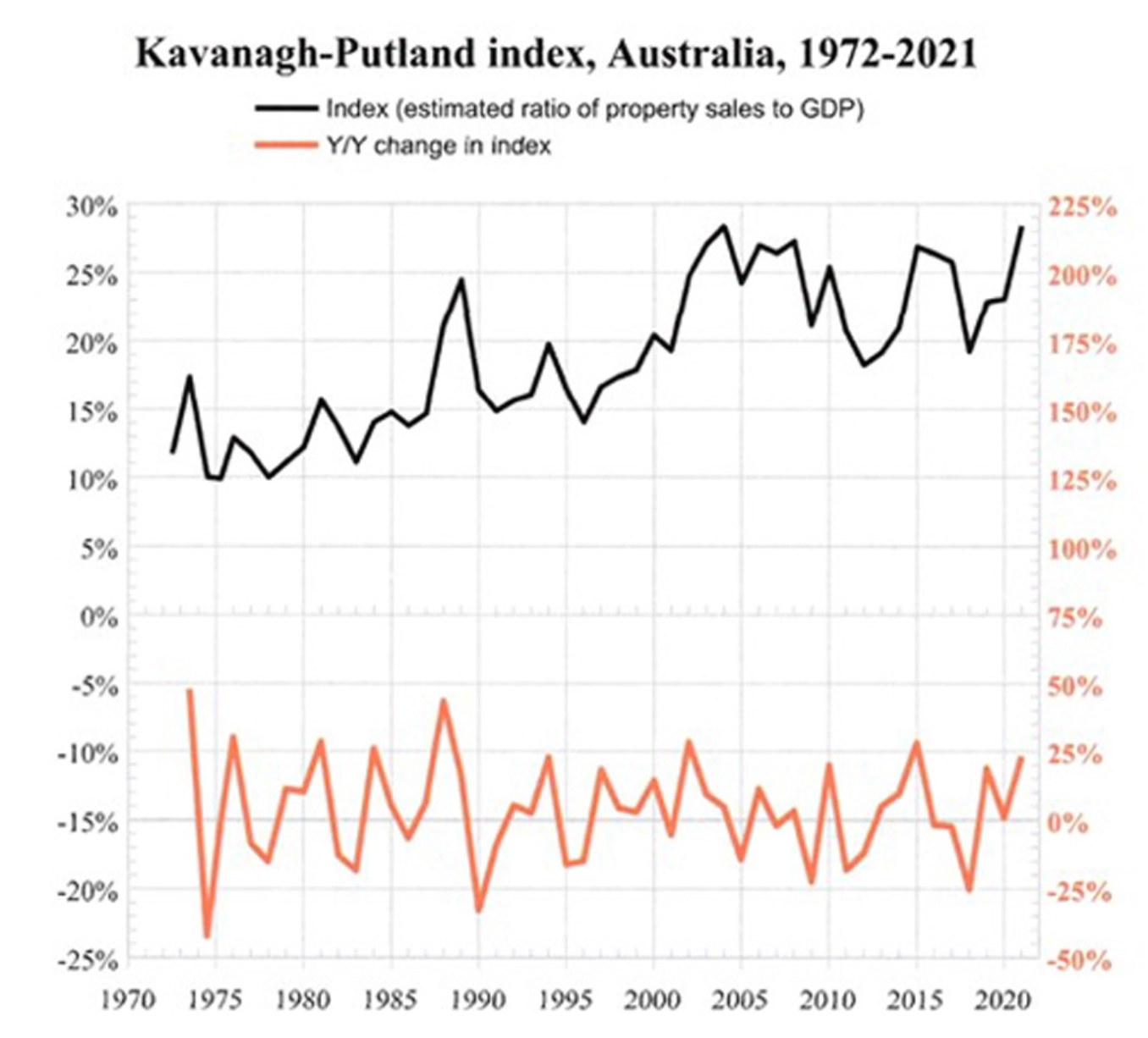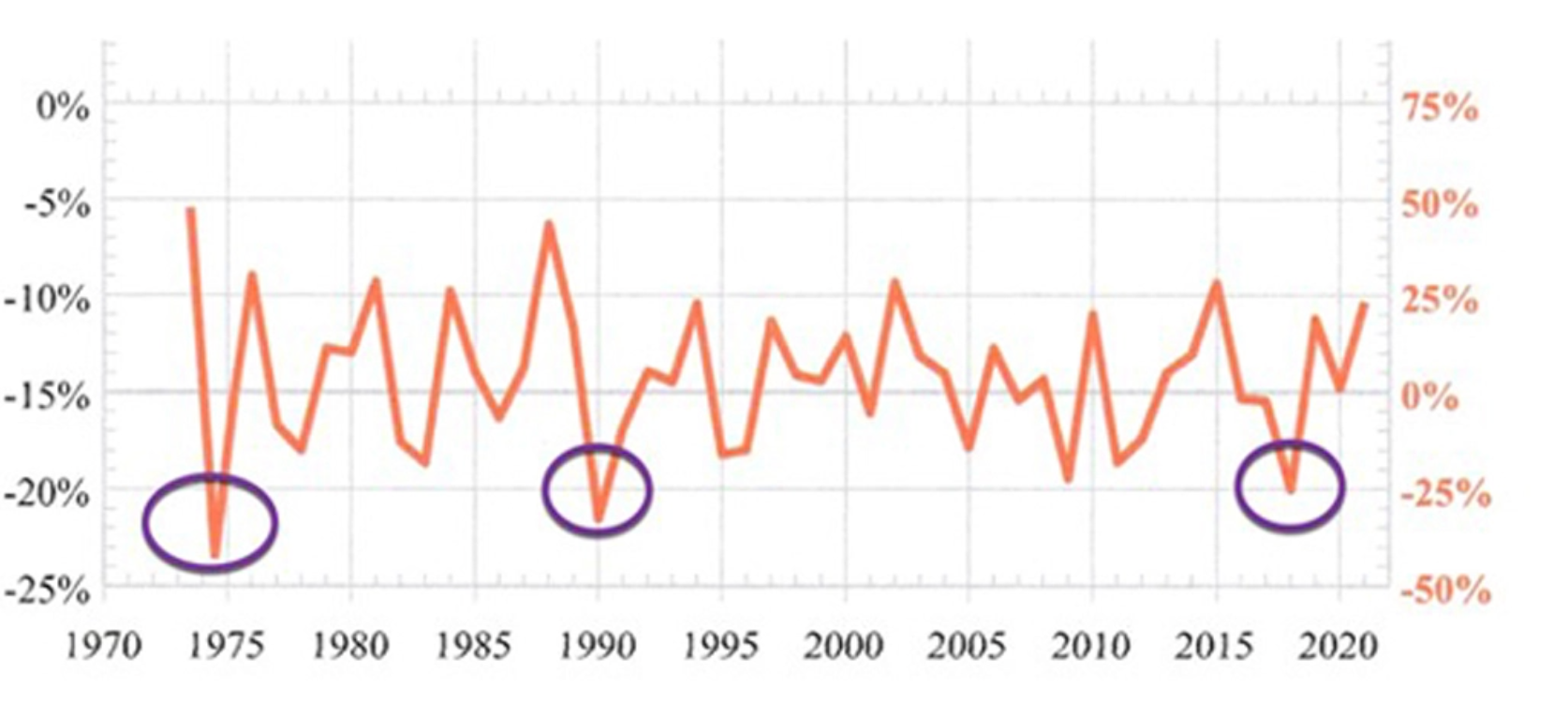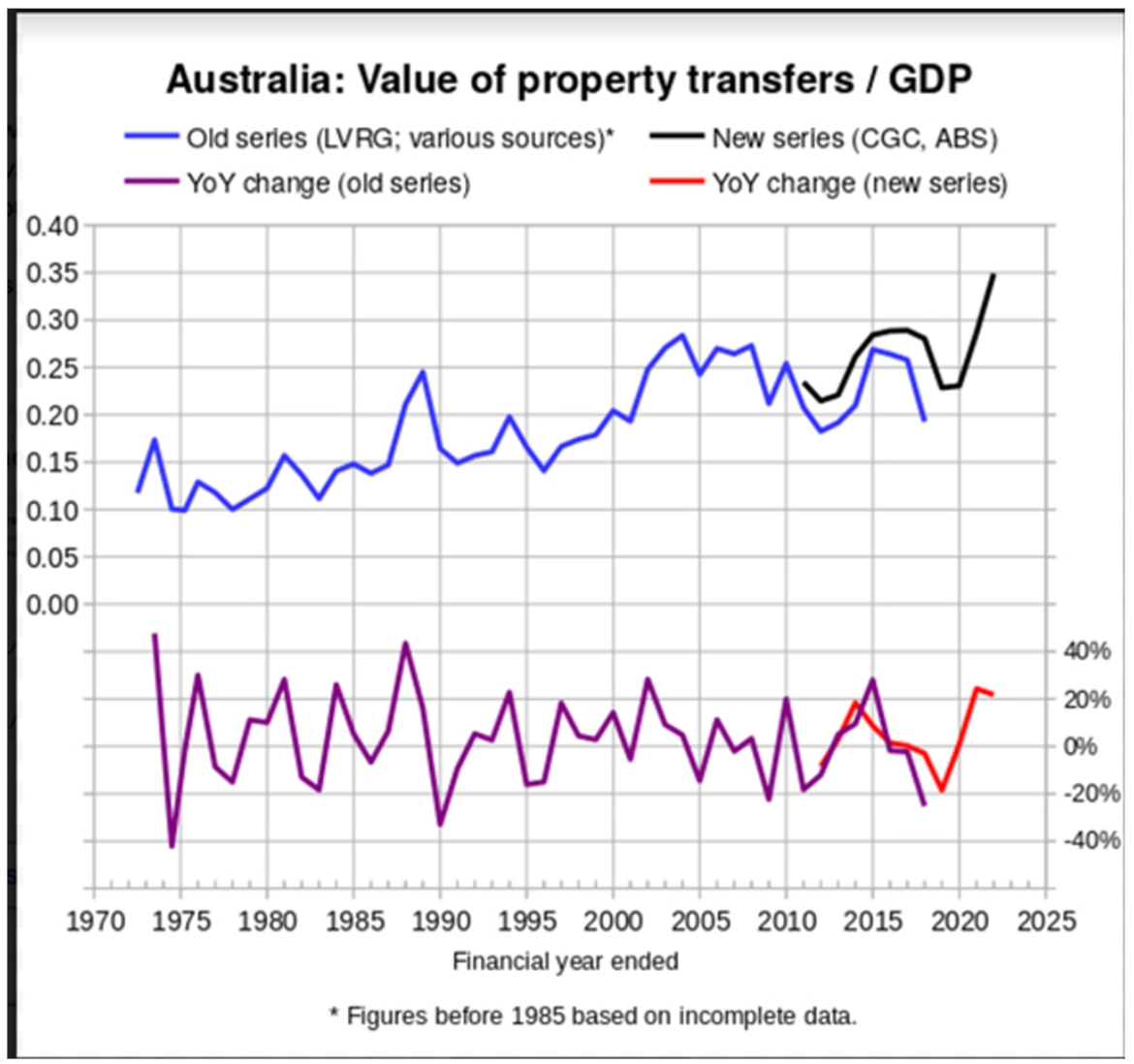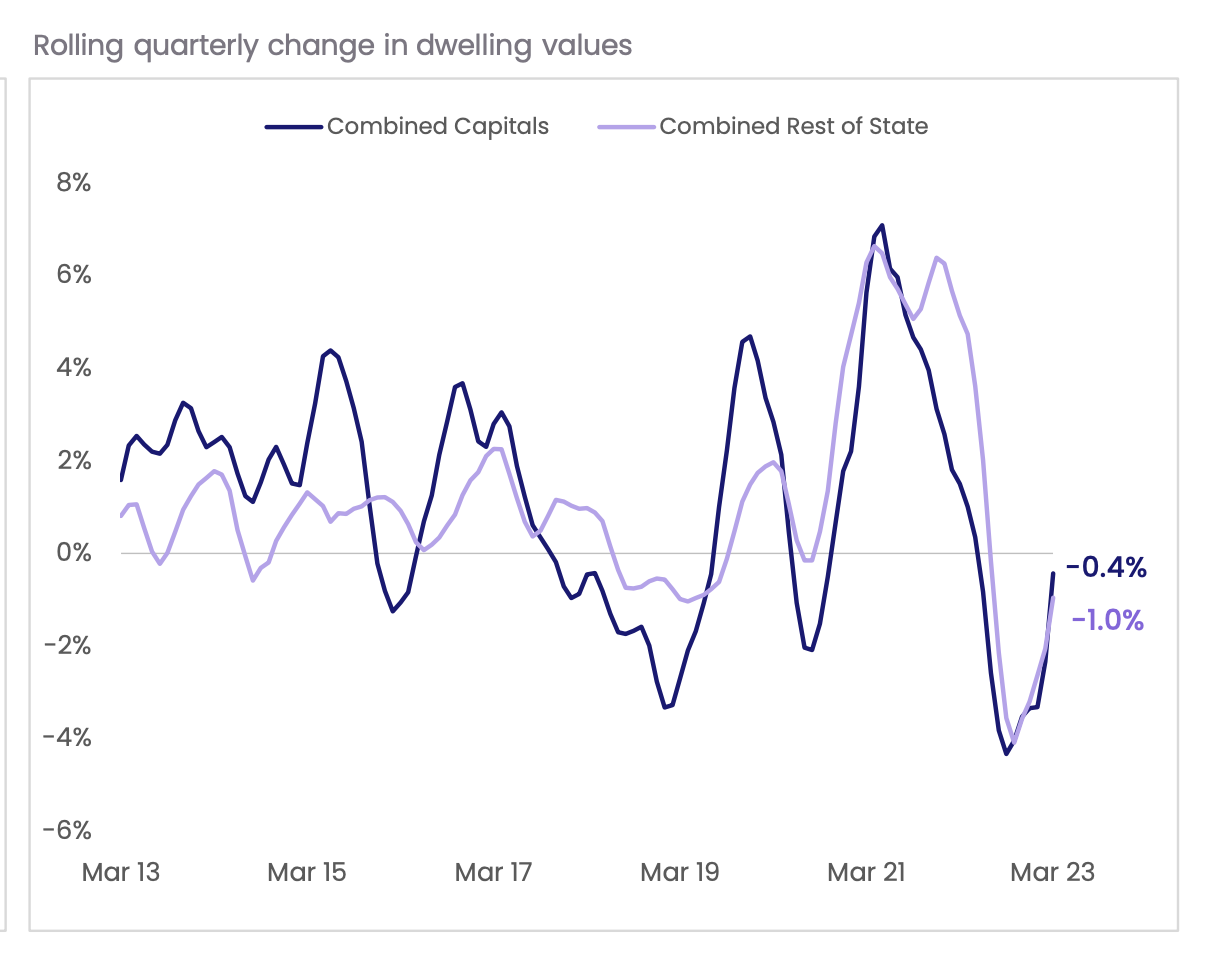Predicting a land-based led recession - the ones that pinned the date years in advance
In August 2008 the late great US economist Mason Gaffney published a paper called, ‘THE GREAT CRASH OF 2008’.
In it, he unlocked the underlying causes of the 2008 financial crisis within the context of the 18-year cycle.
Here’s a little of the introduction:
This crash is The Big One; it has the signs of becoming a Category 5.
‘How do we know?
‘We’ve “been there and done that” so many times before, roughly every 18 years over the last 800 or more.
‘Major wars and, rarely, plagues have broken the rhythm, along with the little ice age, reformation and counter-reformation, political revolutions and reactions, the rise of nation-states, the enclosure movement, the age of exploration, massive European imports of stolen American gold, the scientific and industrial revolutions, the Crusades, Mongol and Turkish invasions, and other upheavals….
‘Yet, the endogenous cycle keeps returning, as soon as we find peace, and economic life returns to its even tenors.
‘What President Warren Harding famously called “normalcy” soon evolved into another boom and a shocking bust, as so often before.
‘Calm and routine prosperity has never been man’s lot for long: it somehow leads to its own downfall, cycle after cycle…’
The paper has many nuggets of gold buried within the research.
It’s a landmark piece of writing and a must-read for every student of the real estate cycle.
But amid the commentary, Gaffney noted the following:
‘Modern Georgists enter this period of danger and opportunity in relatively good shape. Several have outstanding scorecards calling the current crash.
‘These include
- ‘Fred Foldvary (2007, The Depression of 2008);
- ‘Fred Harrison (2005, Boom/Bust);
- ‘Michael Hudson (2006, “Guide to the Coming Real Estate Collapse”, Harper’s, May) and,
- ‘Bryan Kavanagh (2007, Unlocking the Riches of Oz).
‘Each has a slightly different take on it, but they all saw it coming and stuck their necks out, far out, to forecast it in print.….
‘These Georgists who foretold this crash deserve a hearing, in preference to those who failed, and certainly to those who still deny it…’
For Gaffney to mention those names within his paper is high praise indeed.
Mason (or Mase as he was known to his mates) was one of the most prominent Georgist economists that lived.
Former Professor of Economics at UC Riverside from 1976–2015, he sadly passed away during the pandemic at the age of 96 — but left behind a monumental body of work.
Numerous books, articles, and research papers, including The Corruption of Economics (a must-read co-authored by Fred Harrison) and After the Crash: Designing a Depression-Free Economy.
He was, of course, also an expert on the drivers behind the 18-year real estate cycle (you can read more about Gaffney’s work here).
As mentioned by Gaffney, the Georgists who forecasted the crash certainly deserve a hearing.
However, the mainstream media never gives voice to the economists with a solid record of forecasting the booms and busts in the economy.
They’re considered mavericks in their profession.
It’s still thought to be impossible to accurately forecast future recessions by the powers that hold influence over monetary and fiscal policy.
Notably, only a few weeks ago, the MSM was broadcasting news that ‘experts’ were warning of at least a 20% peak to trough fall in the national median — and buyers were running scared.

Now the advice in the mainstream is to get in quick before prices take off!

Victorian home buyers are being warned to get in quick before property prices begin to rise again — real estate experts say a perfect storm of factors means that is now a small window of opportunity to snap up a bargain…’ (Nine news)
You have to smile.
Are we facing a boom or bust?
If you’ve been following the research published here, you would have had the heads up that the market started to turn late last year. And we’re fully expecting another surge into the peak of 2026, based on the study of cycles that have repeated themselves (in the same pattern and same sequence) for centuries.
A boom in both price and building.
Great ready for it.
One thing you can be sure of is that the MSM won’t forewarn you in advance of the crash into 2028.
Point being, you’ll never get accurate information watching the news.
Mentioned in Mason’s paper are researchers you should take note of.
Let’s briefly run through who they are.
Fred Harrison
Readers are already familiar with Fred’s vast body of research.
He has given many interviews for Cycles, Trends & Forecasts over the last year or so.
He forecasted the recession of 1991 — eight years before it happened. And the great financial recession of 2008 in 1997 — 11 years before it happened.
In 1997, he wrote in his book, The Chaos Makers:
By 2007 Britain and most of the other industrially advanced economies will be in the throes of frenzied activity in the land market…land prices will be near their 18-year peak…on the verge of the collapse that will presage the global depression of 2010.’
In 2015, on his website, he forecasted a ‘mid-cycle crash’ for 2019–20.
Fred Harrison’s track record is unsurpassed.
Fred Foldvary
Fred Foldvary passed away on 5 June 2021 at the age of 75.
He was a researcher and author on public finance, governance, ethical philosophy, and land economics, as well as an avid supporter of the teachings of Henry George.
He taught at several universities throughout his career, including Santa Clara University in California from 1974–1994 and the University of California, Berkeley.
Fred studied the cycle as it applied to the US market back to the 1800s.
You can browse through some of his many papers and magazine articles here.
Foldvary is renowned for going on record in the American Journal of Economics and Sociology in 1997 and predicting the exact timing of the 2008 economic recession — 11 years in advance!
In 2007, just prior to the downturn, he repeated that prediction in an interview.
He was asked why he still felt it would happen while the economy looked ‘so God damn good!’.
Take a look below.
Michael Hudson
Michael Hudson is a US economist, academic, and researcher best known for his contributions to the field of heterodox economics.
His most notable contribution to mainstream economics came in his prediction of the 2008 financial crisis.
He had been warning for years prior to the crisis that the housing market was in a bubble and that the widespread use of subprime mortgages was unsustainable.
He also argued that the excessive use of debt and financialisation of the economy was creating a dangerous situation that could lead to a major recession.
The article Mason mentions in his paper ‘The New Road to Serfdom — An illustrated guide to the coming real estate collapse’ written before the 2008 GFC in 2007 is another must-read.
It’s usually locked behind a paid subscription to Harper’s Magazine.
However, here’s an excerpt.
Never before have so many Americans gone so deeply into debt so willingly. Housing prices have swollen to the point that we’ve taken to calling a mortgage — by far the largest debt most of us will ever incur — an “investment.” Sure, the thinking goes, $100,000 borrowed today will cost more than $200,000 to pay back over the next thirty years, but land, which they are not making any more of, will appreciate even faster. In the odd logic of the real estate bubble, debt has come to equal wealth….’
Bryan Kavanagh
The last name mentioned by Gaffney is our very own Bryan Kavanagh.
If you’re on Twitter, you may have seen some of Bryan’s tweets under the handle @bryankav123.
Bryan is a long-standing member of Prosper Australia’s executive committee (the longest-running Henry George association in the world of which I am President).
He’s a retired real estate valuer and resident expert on both the 18-year real estate cycle and the Kondratieff wave.
Bryan worked in the Australian Taxation Office in Melbourne in 1971 and the Commonwealth Bank of Australia in 1989 before co-founding a private valuation practice in 1997 and retiring in 2013.
He’s also the Kavanagh/Putland Index (KP Index) co-creator alongside Dr Gavin Putland.
Here’s a copy of the index:

My subscribers to my free newsletter - Land Cycle Investor ((VIEW LINK) are familiar with this chart.
It has proven to be a very reliable indicator of economic recessions some 12–18 months in advance.
It’s not an index that shows whether real estate prices are going up or down.
Rather, it focuses on the total value of transactions for both commercial and residential (basically monitoring people’s ability to access credit and buy).
The index charts the ratio of the total value of Australian real estate sales to GDP.
It is called an ‘index’ rather than a ‘ratio’ because it is based on a varying sample. (The data is correlated from a range of different sources as specified here.)
To explain what the index pictures in simple terms, think of it as the more dollars we pour into land speculation, the less we have to spend on the productive sectors of the economy.
When land prices are booming, and the total value of transactions are increasing, the seeds of destruction are being sown into the fabric of the economy, laying the turf for a looming recession as soon as the boom culminates and buyers stop spending.
Especially in a country where the financial system is choreographed around the property industry, and so many businesses are dependent on the so-called ‘wealth effect’ that results from people leveraging debt against rising real estate values.
It is this that provides a better indication of the overall health and long-term direction of the economy — rather than median price data or auction clearance rates that dominate the mainstream media.
The KP Index is a valuable leading indicator to identify when the recessions (mid-cycle and end-of-cycle recessions) will occur. And for this reason, you’ll probably never see it spoken of publicly.
The KP Index shows that recessions usually occur within 12–18 months of the year-on-year index declining by 25% or more (noted from the right-hand axis).

You can see it did this before the end-of-cycle recessions in the 1970s and 1990s.
It did so again in mid-2018, pointing toward recession at the end of 2019 and the beginning of 2020 — the mid-cycle.
It’s this that allowed Bryan to not only accurately call the 2008 real estate collapse but also the 2020 mid-cycle recession a year in advance — as published in MacroBusiness in January 2019.
Thus, earning him an honorary mention in Mason Gaffney’s paper:
Real estate cycle expert Bryan Kavanagh says turnover and price declines in Sydney and Melbourne during 2018 indicate an economic recession in the 2019-20 financial year.
‘The 2018 “Kavanagh-Putland Index”, released today, shows the total value of Australian real estate sales to GDP.
‘Mr Kavanagh said the $50 billion pumped into markets by the Rudd-Swan government in 2008-09 to forestall the 2008 real estate bubble-burst of the USA and Europe “had simply kicked the can down the road for a greater financial correction”.
‘“Led by the residential sector, Australian real estate markets have been in bubble territory since 1996, and the 2018 K-P Index update shows the correction is imminent”, Mr Kavanagh said.
“The Kavanagh-Putland Index demonstrates that recessions usually ensue within 12 months of the year-on-year index declining by more than 25% – and it did this during 2018.”
‘… “Australians have been doing what the tax system has encouraged them to do: to invest in real estate, because their increase in real estate wealth tends to dwarf the wages they’re able to earn”, Mr Kavanagh said.’
This PowerPoint presentation, put together by Bryan Kavanagh, demonstrates not only how the index charts the history of the excessive booms and busts of the last three real estate cycles (spanning from the recession in the early 1970s to the 2008 collapse) as well as the forewarning of the 2020 mid-cycle recession.
It also shows how a change of government is inevitable when the recession hits.
Bryan Kavanagh and Dr Gavin Putland - (a former Member, Department of Electrical and Computer Engineering, at the University of Queensland, 1995-97, a Senior Research Officer Qatar University 1999-2003, and Research Officer for Prosper Australia from 2002-2013) - updated the index in March.
This is a significant update, for if the year-on-year data declined by 25% or more, we could be looking at an early peak to the cycle — no more than 18 months away.
Before I start the chat, please note that updating the chart is no easy task.
Initially, Bryan Kavanagh obtained the figures from government offices.
However, as more and more governments monetised their data selling out to real estate data monopolies such as CoreLogic, obtaining the information needed without paying thousands is impossible.
The data sets are now sourced from the Commonwealth Grants Commission, which shows sales per population head.
This is then divided by GDP per head (the two per capita cancelling each other out) to give a similar, but slightly different, index line than the earlier KP Index ‘total sales divided by GDP’ figures.
You’ll note the slight discrepancy between the two data sets evidenced on the updated chart below.
However, it doesn’t significantly change the outcome.
Here’s the updated index:

Source: Prosper Australia - Dr Gavin Putland & Bryan Kavanagh
What does it indicate?
The 2023 update from the CGC shows the value of property transfers per capita from the 2018/19 FY (financial year) to the 2021/22 FY.
The total value figures per capita are $17.7k, $17.9k, $23.3k, and $31.3k.
When correlated with the index, it shows a big bubble (perhaps the biggest on record?) but not yet any imminent bust.
Property turnover to GDP for the whole 2021/22 financial year was at a
record high.
Obviously, the true extent of the recent downturn following the peak in early 2022 hasn’t been completely priced into the data. Turnover did reduce through the year to the end of 2022 and the beginning of 2023. When the index is updated again, the bubble will have moderated somewhat.
However, the market has now turned - the index shows we're not on the verge of a property market crash ... yet.
Despite calls of 15–25% drops in the national median (currently down just shy of 10%), the real estate markets are on the way up.

Since CoreLogic’s daily dwelling values index bottomed on 7 February, values have risen with Sydney values leading the turn with a 1.3% increase in the median.
We need to give a hat tip to Louis Christopher at this point.
I interviewed him at the end of October 2022, a day or so before ‘Christophers Housing Boom and Bust Report 2023’ was released.
In that interview, Louis forecasted a modest recovery in the housing market, led by both Sydney and Perth.
No other data agency would have been brave enough to call a turn in the country’s most expensive capital.
It’s why I give SQM’s analysis more credence for short-term price calls than any other. And best of all? Much of their data is free and accessible to the public.
Why the upturn despite further rises in the cash rate?
Well, a few factors.
Lack of listings, soaring rents, record immigration, and home buyer incentives (such as the switch from stamp duty to land taxation in NSWs for first-time buyers), proving again and again that you cannot analyse the market through a one-eyed lens of interest rates alone.
Without an understanding of the timing of the 18-year property cycle, the unfortunate fact is that mainstream analysts are running blind.
They’re unable to foresee the drivers that will eventually take the world’s markets into the next deep land-based and led recession into 2028.
As it is, we can tentatively conclude that we’ve passed the bottom of the downward house price cycle for now.
The KP Index shows there is further to go before we reach the peak.
The next phase, into 2024, is the 'winner’s curse'.
The two-year period of irrational exuberance between 2024–2026.
There’s money to be made in the property market for those that purchase before prices taking off.
There’s also money to be made in the stock market.
In the second half of the cycle, banking, materials, and commodities perform strongly.
You can read more about that via my free weekly newsletter over at Catherine Cashmore's Land Cycle Investor.
Until next time...
Catherine Cashmore
(If you’re interested in learning more, I’d like to invite you to join Catherine Cashmore’s Land Cycle Investor.
It's a free twice-weekly publication packed with content as well as interviews with some of Australia's leading analysts!
Designed to give Australian investors access to the secret knowledge that sits behind the 18.6-year land cycle, how it applies to Australia state-by-state and how they can best take advantage. Click here to learn more.)
Never miss an insight
If you're not an existing Livewire subscriber you can sign up to get free access to investment ideas and strategies from Australia's leading investors.
And you can follow my profile to stay up to date with other wires as they're published – don't forget to give them a “like”.
4 topics

Catherine Cashmore has been working in the Australian real estate industry for over 15 years. She is editor of Fat Tail Investment Research - Cycles, Trends, & Forecasts and Land Cycle Investor – publications that teach real estate and stock...
Expertise

Catherine Cashmore has been working in the Australian real estate industry for over 15 years. She is editor of Fat Tail Investment Research - Cycles, Trends, & Forecasts and Land Cycle Investor – publications that teach real estate and stock...
